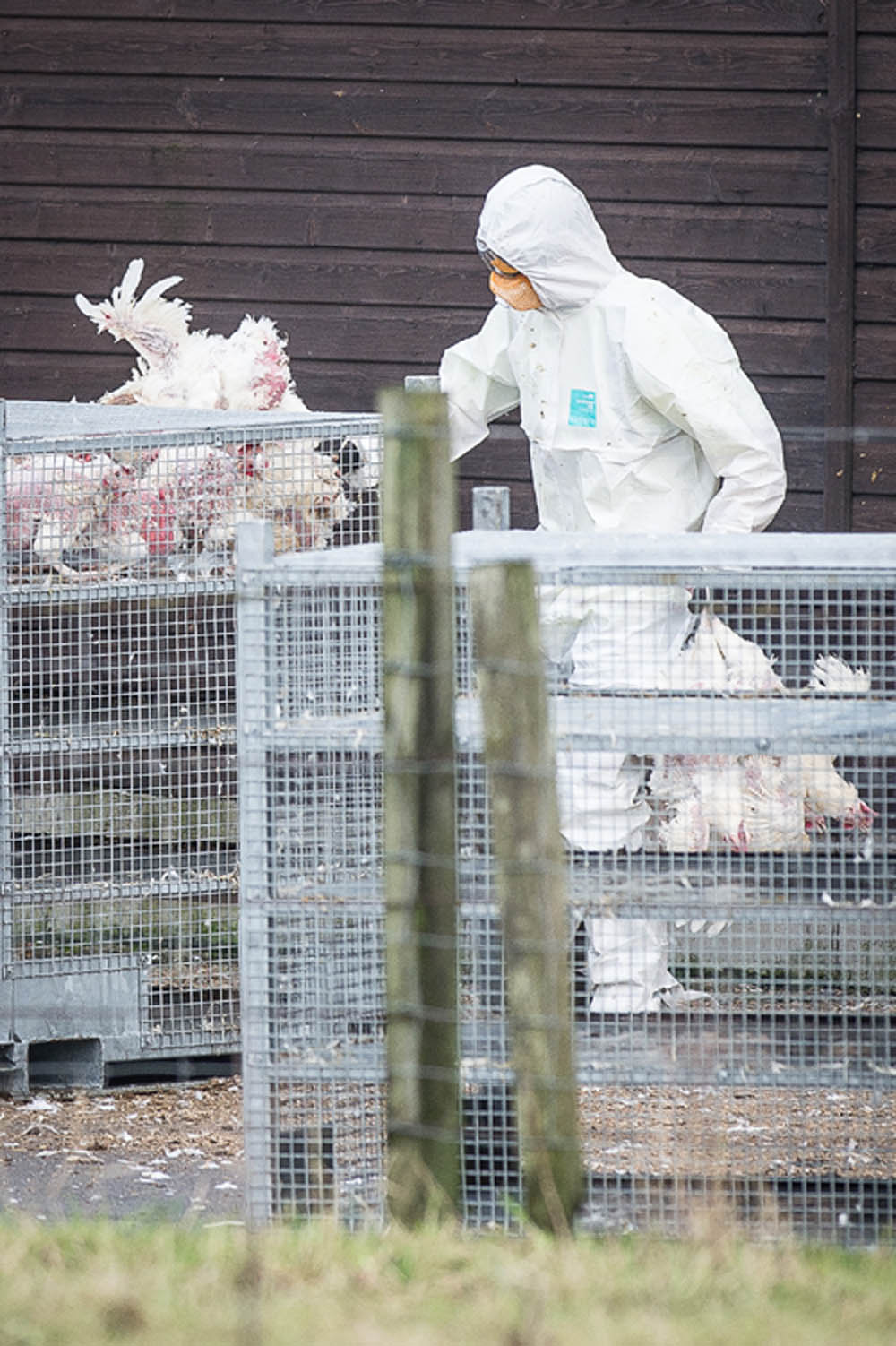THOUSANDS of live chickens were placed in cages, gassed, and dumped in container lorries yesterday as a cull of 40,000 birds started at the Fife farm infected with avian flu.
Grim pictures show workers in white overalls putting handfuls of the birds in shelved cages, which were then placed in black airtight containers.
The birds were then gassed to death using a mixture of argon and nitrogen on Craigie Farm, near Dunfermline in Fife.
Workers then inspected the cages to ensure none of the birds survived – before others sprayed them down with a disinfectant wash.

Pictures then show heavy lifting machinery being used to dump the carcasses of the birds in the trailer of a large truck.
The bodies of the chickens will be transported off site to be incinerated in order to ensure that the virus does not spread any further.
At the same time workers in full protective gear could be seen spraying down machinery and vehicles on the site.
Around 20 disease-control experts were thought to be on site at the farm to complete the government-ordered cull of 40,000 birds on the usually quiet piece of land in the Fife countryside.
Bosses say they expect the cull to take two days.

The suspected case of bird flu was reported late on Sunday night, with lab tests confirming presence of the virus on the farm on Monday.
The same day disease control bosses announced that a 1km “control zone” would be put up around the site and a complete cull of the farm’s stock would begin.
On Tuesday pictures showed the equipment arriving at the farm – which breeds chickens to be used for egg-laying.
Disease experts assured local farmers that the strain of the virus found is “very mild” – but have urged them to remain vigilant and have put up a 1km “control zone” around the infected site.
Speaking on Tuesday Scotland’s chief veterinary officer Sheila Voas said: “We are looking into possible sources of this infection in Scotland but it is normal for such viruses to circulate among wild bird populations, especially waterfowl.
“However, it is important that poultry keepers remain vigilant for any signs of disease and to ensure they are maintaining good biosecurity on their premises.”
Consumer experts have assured the public that the disease has not made the consumption of Scottish poultry unsafe.

